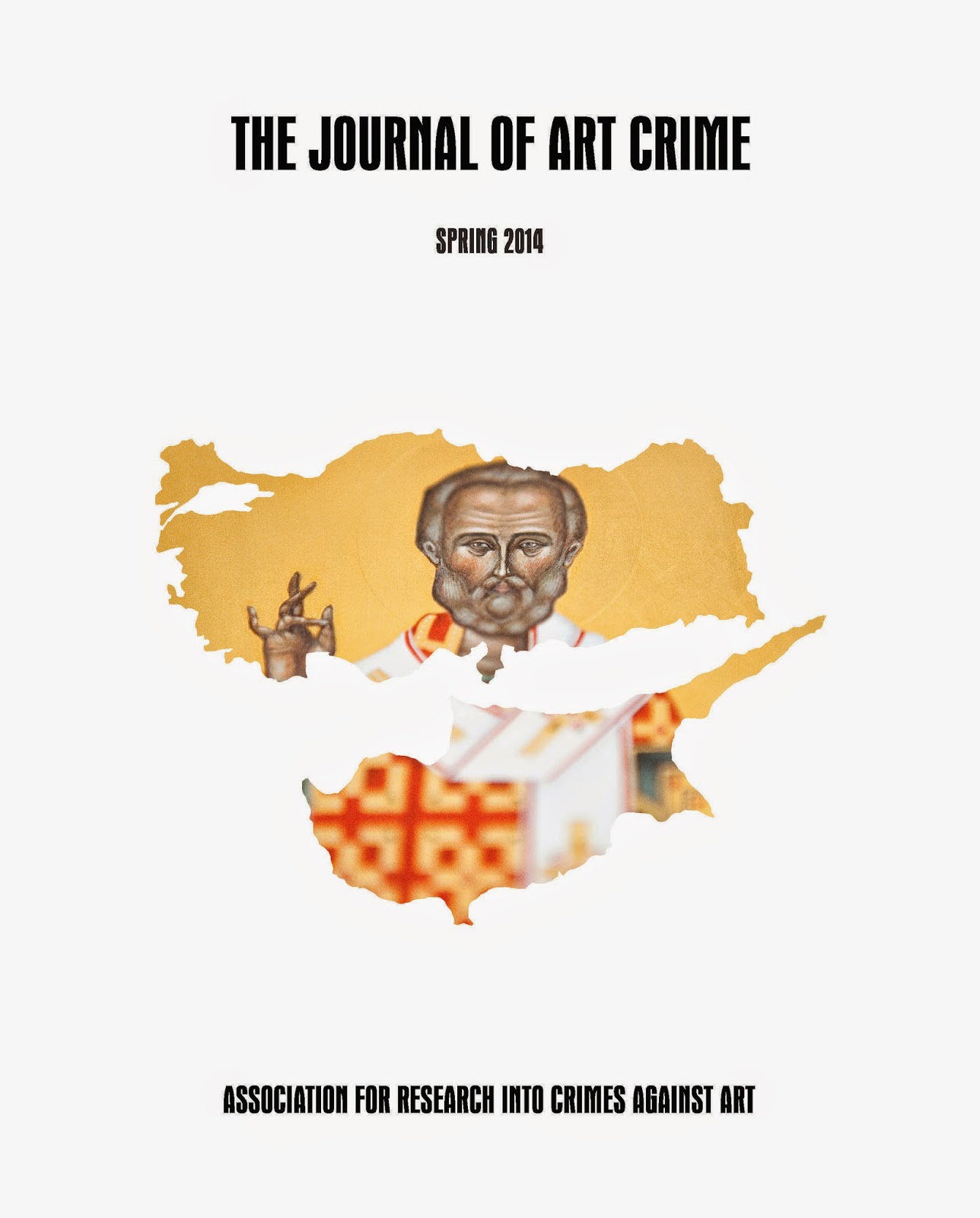Saturday, May 31, 2014 -  cultural heritage,Joris Kila,Mali,Spring 2014,the Journal of Art Crime
cultural heritage,Joris Kila,Mali,Spring 2014,the Journal of Art Crime
 No comments
No comments
 cultural heritage,Joris Kila,Mali,Spring 2014,the Journal of Art Crime
cultural heritage,Joris Kila,Mali,Spring 2014,the Journal of Art Crime
 No comments
No comments
Joris Kila's "Mission Report: Civil-Military Assessment Mission for Malian Heritage" Published in the Spring 2014 issue of ARCA's Journal of Art Crime
Joris Kila is a researcher at the Kompetenzzentrum Kulturelles Erbe und Kulturgüterschutz of the University of Vienna in Austria. He has been acting chairman of the cultural affairs department at the Civil-Military Cooperation (CIMIC) Group North in the Netherlands, and in that capacity he undertook several cultural rescue missions in Iraq and FYROM (Macedonia). He is Editor in Chief of the Peer Reviewed series Heritage and Identity at Brill Academic Publishers (Leiden-Boston) and author and co-author of many academic publications on the subject of cultural property protection in times of armed conflict utilizing militarized experts. He holds degrees in Art history and Classical Archaeology and a PhD in Cultural Sciences. He is a reserve Lieutenant Colonel and is regularly asked to advice on Cultural Property Protection issues.
Dr. Kila published the Mission Report on Civil-Military Assessment Mission for Malian Heritage. This is how he describes the mission's objective:
The objective of the mission was to evaluate the current situation of Cultural Heritage (including monuments, archaeological and historical sites and archives) in Northern Mali after the recent armed conflict. Especially possibilities to establish contacts with the Malian Armed Forces resulting in support for their eventual endeavors to help protecting Cultural Heritage following international legal obligations had to be assessed. The latter should preferably lead to military participation in a, yet to be created, National committee of the Blue Shield in Mali.
Different accounts and statements regarding iconoclasm, looting and vandalism were published regarding locations in Northern and Central Mali that were, until recently under control of Jihadist forces. Sometimes such reports were contradictive and vague therefore it was necessary to send a mission, especially to those sites that were reportedly affected by both criminal and supposedly military ‘’justified’’ acts. Aim was to document the situation, to state damages incurred and to encourage and motivate the parties involved, especially the Armed Forces of Mali, to further efforts to protect the invaluable Cultural Heritage of Mali.
The team took advantage of their former experiences during Civil-Military Assessment Missions on the status of Egyptian and Libyan Heritage.
The objectives of the Malian mission went beyond mere damage assessment. Considered were also typical post war problems such as illegal digging, looting and illicit traffic of cultural property. An international, timely and independent fact finding mission generally provides support on a wide (international) level while at the same time giving perspectives, at least for the mid-term. In addition signs of international concern and solidarity can encourage those Malians who protected their heritage under difficult and dangerous conditions during the recent occupation. It was of vital importance to make contacts, or stay in contact with those, currently responsible for Mali's heritage, especially in the Armed Forces. This way it will be possible to assist with raising awareness on the protection of cultural property while stimulating potential international professional support to be offered and also discuss issues on a personal and direct level.
You may finish reading this column in the Spring/Summer 2014 issue (#11) of The Journal of Art Crime edited by ARCA founder Noah Charney. The Journal of Art Crime may be accessed through subscription or in paperback from Amazon.com. The Table of Contents is listed on ARCA's website here. The Associate Editors are Marc Balcells (John Jay College of Law) and Christos Tsirogiannis (University of Cambridge). Design and layout (including the front cover illustration) are produced by Urška Charney.










